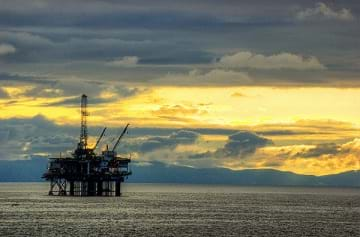
Summary
Students investigate sources of fossil fuels, particularly oil. Through two associated activities, they work with a model of the Earth to learn how engineers and scientists look for oil by taking core samples, and they explore and analyze oil consumption and production in the U.S. and around the world.Engineering Connection
Finding fossil fuels below the Earth's surface is a challenge for geological and petroleum engineers. Much investigation is done before drilling expensive wells: They examine core samples, look for natural fractures in the reservoir rock, and investigate the size and porosity of the reservoir and how fast oil droplets move through the pores. Engineers also design special machines and tools for extracting and transporting oil, and complex refining processes to convert the crude oil into many forms of usable energy.
Learning Objectives
After this lesson, students should be able to:
- Describe the origin of fossil fuels.
- Explain the important role of engineering in gathering and finding oil.
- Describe how people use oil in their everyday lives.
Educational Standards
Each TeachEngineering lesson or activity is correlated to one or more K-12 science,
technology, engineering or math (STEM) educational standards.
All 100,000+ K-12 STEM standards covered in TeachEngineering are collected, maintained and packaged by the Achievement Standards Network (ASN),
a project of D2L (www.achievementstandards.org).
In the ASN, standards are hierarchically structured: first by source; e.g., by state; within source by type; e.g., science or mathematics;
within type by subtype, then by grade, etc.
Each TeachEngineering lesson or activity is correlated to one or more K-12 science, technology, engineering or math (STEM) educational standards.
All 100,000+ K-12 STEM standards covered in TeachEngineering are collected, maintained and packaged by the Achievement Standards Network (ASN), a project of D2L (www.achievementstandards.org).
In the ASN, standards are hierarchically structured: first by source; e.g., by state; within source by type; e.g., science or mathematics; within type by subtype, then by grade, etc.
NGSS: Next Generation Science Standards - Science
| NGSS Performance Expectation | ||
|---|---|---|
|
4-ESS1-1. Identify evidence from patterns in rock formations and fossils in rock layers to support an explanation for changes in a landscape over time. (Grade 4) Do you agree with this alignment? |
||
| Click to view other curriculum aligned to this Performance Expectation | ||
| This lesson focuses on the following Three Dimensional Learning aspects of NGSS: | ||
| Science & Engineering Practices | Disciplinary Core Ideas | Crosscutting Concepts |
| Identify the evidence that supports particular points in an explanation. Alignment agreement: | Local, regional, and global patterns of rock formations reveal changes over time due to earth forces, such as earthquakes. The presence and location of certain fossil types indicate the order in which rock layers were formed. Alignment agreement: | Patterns can be used as evidence to support an explanation. Alignment agreement: Science assumes consistent patterns in natural systems.Alignment agreement: |
| NGSS Performance Expectation | ||
|---|---|---|
|
4-ESS3-1. Obtain and combine information to describe that energy and fuels are derived from natural resources and their uses affect the environment. (Grade 4) Do you agree with this alignment? |
||
| Click to view other curriculum aligned to this Performance Expectation | ||
| This lesson focuses on the following Three Dimensional Learning aspects of NGSS: | ||
| Science & Engineering Practices | Disciplinary Core Ideas | Crosscutting Concepts |
| Obtain and combine information from books and other reliable media to explain phenomena. Alignment agreement: | Energy and fuels that humans use are derived from natural sources, and their use affects the environment in multiple ways. Some resources are renewable over time, and others are not. Alignment agreement: | Cause and effect relationships are routinely identified and used to explain change. Alignment agreement: Knowledge of relevant scientific concepts and research findings is important in engineering.Alignment agreement: Over time, people's needs and wants change, as do their demands for new and improved technologies.Alignment agreement: |
| NGSS Performance Expectation | ||
|---|---|---|
|
5-ESS3-1. Obtain and combine information about ways individual communities use science ideas to protect the Earth's resources and environment. (Grade 5) Do you agree with this alignment? |
||
| Click to view other curriculum aligned to this Performance Expectation | ||
| This lesson focuses on the following Three Dimensional Learning aspects of NGSS: | ||
| Science & Engineering Practices | Disciplinary Core Ideas | Crosscutting Concepts |
| Obtain and combine information from books and/or other reliable media to explain phenomena or solutions to a design problem. Alignment agreement: | Human activities in agriculture, industry, and everyday life have had major effects on the land, vegetation, streams, ocean, air, and even outer space. But individuals and communities are doing things to help protect Earth's resources and environments. Alignment agreement: | A system can be described in terms of its components and their interactions. Alignment agreement: Science findings are limited to questions that can be answered with empirical evidence.Alignment agreement: |
Common Core State Standards - Math
-
Draw a scaled picture graph and a scaled bar graph to represent a data set with several categories. Solve one- and two-step "how many more" and "how many less" problems using information presented in scaled bar graphs.
(Grade
3)
More Details
Do you agree with this alignment?
International Technology and Engineering Educators Association - Technology
-
The use of technology affects the environment in good and bad ways.
(Grades
3 -
5)
More Details
Do you agree with this alignment?
-
Energy comes in different forms.
(Grades
3 -
5)
More Details
Do you agree with this alignment?
State Standards
Colorado - Science
-
Analyze and interpret data to generate evidence about the prehistoric environment
(Grade
4)
More Details
Do you agree with this alignment?
-
Create and evaluate models of the flow of nonliving components or resources through an ecosystem
(Grade
4)
More Details
Do you agree with this alignment?
-
Use multiple resources – including print, electronic, and human – to locate information about different sources of renewable and nonrenewable energy
(Grade
4)
More Details
Do you agree with this alignment?
Introduction/Motivation
What is as precious as gold? Oil! Have you ever wondered where oil comes from, or what its use is? Well, the U.S. gets about 37% of its energy from oil, a fossil fuel that is also referred to as petroleum, which comes from sedimentary rocks under the Earth's surface. It takes millions of years to create oil. The process started way before the times of dinosaurs, but some estimates project that humans will use all the oil that exists in 40 to 60 years. Americans have been drilling for oil since about 1859, when the first oil well was constructed (see Figure 1).
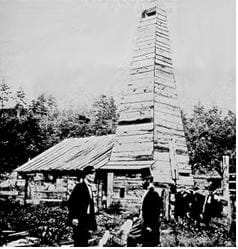
How do oil companies extract (pull out) these tiny droplets away from the rock located thousands of feet underground? How does this oil move through the dense rock and into wells that take it to the surface? How do the tiny droplets combine into the billions of gallons of oil that the U.S. and the rest of the world use each day? Where should engineers drill oil wells to ensure that the most oil is contacted? How should machinery be built and used to get oil? So many questions exist about oil. Fortunately, scientists and engineers use their science and math skills to find answers and solutions to these questions.
First, to harvest oil, we must find it. But, how do you know where is it if you cannot see under the ground? Geological and petroleum engineers drill holes in the Earth to get core samples of the underground layers. If oil is found in the core sample, then the chances are good that more oil is present in the region surrounding the core. Next, the oil must be extracted and transported to a location where it can be used. Refer to the associated activity Model Earth Core Samples: What’s Down There? to have students act as engineers in harvesting and analyzing their own core samples. Unfortunately, many of the steps involved in getting oil to our homes and vehicles have the potential to generate pollution. Pulling oil up to the surface of the Earth can pollute the ground, moving oil to other locations sometimes results in oil spills, and burning oil to get energy for automobiles or to get electricity at power plants can generate air pollution.
Despite the potential for pollution, oil provides energy for most of the U.S. Most cars run on gasoline, which is made from oil, and many houses are heated by oil. Engineers need to know about oil reservoirs before they begin the process of drilling wells, which is very costly. Incorrect predictions can be costly errors for oil companies. They need to know about the size and number of pores in reservoir rock. They need to know how fast oil droplets move through these pores. They need to know where the natural fractures are in reservoirs so that they know where to drill wells. Finding the answers involves research that is a mix of fluid mechanics, thermodynamics, applied mathematics and geology, which are all engineering areas of study. Engineers develop the machines and tools used for all steps for the extraction, transportation and burning of oil for energy. Students can expand their knowledge of these engineering practices with the literacy activity A Closer Look at Oil and Energy Consumption by analyzing oil consumption and production data in the U.S. and around the world.
Lesson Background and Concepts for Teachers
Sedimentary Rocks
Fossil fuels are energy-rich substances that have formed from the Earth's long-buried plants and microorganisms. Crude oil, one common fossil fuel, is formed in sedimentary rocks. Sedimentary rocks are rock layers formed from sediments, such as sand and organic matter that are transported, deposited and cemented together over time. Sedimentary rocks typically have visible layers of different kinds of sediment (see Figure 2).
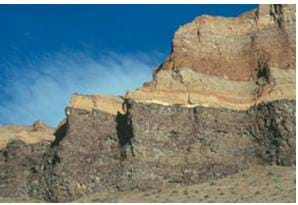
The sediment is always deposited in horizontal layers, one on top of the other. Therefore, sedimentary rocks exhibit horizontal layers initially, and the layers closest to the bottom, or found deeper under the Earth's surface, are the oldest. Over time, however, the Earth's natural and dynamic processes, such as erosion and plate tectonics, can alter the rocks. Plate tectonics causes rocks to fold and fault, as seen in Figure 3.
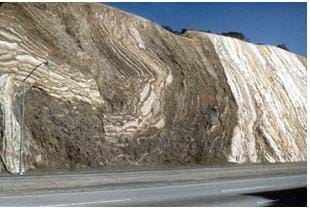
How Fossil Fuels are Formed
Millions of years ago, in certain parts of the world, when thriving marine communities with lots of different organisms died, they became organic matter (sediments) on the ocean floor. Over time, more sediment was deposited on top, and both layers solidified into sedimentary rock. A sediment layer with a lot of organic matter has the potential to become oil, provided a couple of other things happen. Usually, microorganisms consume the organic matter in rock layers; however, if the rocks are located in a low-oxygen environment, different microorganisms—called anaerobic organisms—turn the organic matter into methane. Methane, also called natural gas, is made of hydrogen and carbon that can itself be used for energy or it can be turned into oil. Methane becomes oil if it is created deep below the Earth's surface and trapped there by an impermeable rock that it cannot pass through. Impermeable rocks, such as granite that trap methane and oil under the ground are called cap rocks. At locations where cap rocks are faulted, or folded, large oil deposits can be found (see Figure 4).
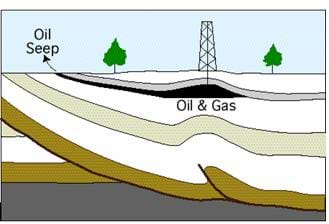
Oil can also found in reservoir rocks, which are permeable rocks in which methane gas became trapped as it migrated up and turned into oil (see Figure 5).
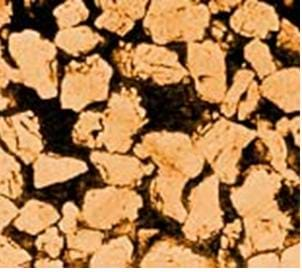
Processing and Finding Oil
First, to harvest oil, we must find it even though it is deep underground where we cannot see. Geological and petroleum engineers drill holes in the Earth to get core samples of the underground layers. If oil is found in the core, then the chances are good that a lot more oil exists in the area surrounding the core. Engineers set up equipment to drill in the exact area that their tests show contain a lot of oil. Then, the oil is extracted, usually by the use of oil wells that pump the oil up to the surface. Extracting oil and using oil can be potentially harmful to the environment. Sometimes when the oil is brought to the surface it contains sediments that cannot be used for energy. If these sediments are not disposed of carefully, they can cause pollution. Once extracted, the oil is transported to where it will be refined and used. During transport, oil has the potentially to cause more pollution. For example, sometimes tankers full of oil run aground and cause oil spills or steadily leak into the ocean. Finally, refining and burning oil contributes to air pollution—and that is in addition to vehicles burning refined oil products, such as gasoline, for energy. Despite the potential for pollution, oil provides essential energy for most of the U.S. Most of our nation's cars run on gasoline, which is made from oil, and many houses are heated by oil, not to mention the enormous amount of plastic products made from crude oil. Because of the anticipated decline in oil supplies and contributions to pollution, engineers are continually searching for more efficient ways to power automobiles and heat houses that use less oil.
Associated Activities
- Model Earth Core Samples: What’s Down There? - Students learn about the formation of fossil fuels under the Earth’s crust. Teams each make a softball-sized model of the Earth using different colors of clay, and then take a core sample, hoping to strike oil! Looking at the sample, they decide if they have found a good location to drill for oil or not. A worksheet is included.
- A Closer Look at Oil and Energy Consumption - Students analyze international oil consumption and production data. They make several graphs to organize the data and draw conclusions about the overall use of oil in the world.
Lesson Closure
What is oil used for? (Possible answers: Oil is refined into many products for many purposes. Some oil is burned to create energy to run automobiles, heat houses, or for oil-burning lamps. Some oil is refined into lubricants used for maintenance of moveable parts such as motors, door hinges and swings. Some oil is used in to create the uncountable number and types of plastic materials that we use every day.)
Where does oil come from? (Answer: Oil is a fossil fuel found underground that was created from plants and animals that were alive millions of years ago.)
In what ways can oil contribute to pollution? (Possible answers: The side-effects of air, land and water pollution from burning it in vehicles, industry and factories, and during the extraction of and transportation of oil from the Earth.)
Can you think of any ways to help reduce the pollution caused by the drilling and transport of oil?
Do you have any ideas of ways to conserve oil so we do not run out of it?
Vocabulary/Definitions
cap rock: A very hard, impermeable rock that traps methane and oil under the ground.
core: A long, thin sample of rock taken from deep below the Earth's surface.
fossil fuel: Energy-rich substances that have formed from the Earth's long-buried plants and microorganisms. Three commonly-used fossil fuels: coal, oil (petroleum) and natural gas.
fracture: A tiny crack in rock layers.
pore: An open space within rock material.
reservoir rock: A rock formation with special kinds of porous rocks that contains oil droplets.
sedimentary rock: Layers of rock that were formed by accumulation of rock fragments, shell fragments, plant material, mud and sands, which were transported to their present locations by water, air, wind or ice.
Assessment
Pre-Lesson Assessment
Brainstorming: Have students generate a number of possible ideas about the following question. Remind students that no idea or suggestion is "silly." All ideas should be respectfully heard. Ask the students:
- What are some of the many uses for oil? (Possible answers: Car fuel, lamp fuel, heaters, to make a hinges and parts work smoothly, to make plastics.)
Post-Introduction Assessment
Question/Answer: Ask questions and have students raise their hands to answer. Discuss their answers as a class.
- Where does oil come from? (Answer: It is found in between the layers of sedimentary rocks under the Earth's surface.)
- How fast do we expect humans to use all the oil? (Answer: It is estimated that people will use all the oil left in 40 to 60 years.)
- What are two types of engineers who work to find and gather oil? (Answer: Petroleum and geological engineers.)
- How do engineers get oil from the ground? (Answer: They drill for it after they have verified its existence through core samples obtained from areas that are predicted to contain oil.)
- After oil is found, what else must be done with it before it can be used in our homes and cars? (Answer: It must be extracted, refined or modified for specific purposes, and transported.)
- Can oil cause pollution? (Answer: Yes. Pulling oil up to the surface of the Earth can pollute the ground, moving oil to another location can leak and cause oil spills on land and water, and burning oil to get energy in cars or at energy plants pollutes the air.)
- What types of things do engineers need to know before drilling for oil? (Answer: They must know the size of oil reservoirs and how oil moves through the reservoirs.)
Lesson Summary Assessment
Numbered Heads: Divide the class into teams of three to five students each. Have students on each team number off so each has a different number. Ask the students a question (give them a time frame for solving it, if desired). Have the members of each team work together to formulate an answer. Everyone on the team must know the answer. Call a number at random. Students with that number raise their hands to answer the question. If not all students with that number raise their hands, give the teams a bit more time. Pick a student to answer. Continue until you get the correct answer.
- How is oil formed? (Answer: From plant and animal microorganisms, or sediments.)
- When was oil made? (Answer: Millions of years ago.)
- Where is oil found? (Answer: Deep below the Earth's surface, in reservoir rocks.)
- For additional questions, see the Post-Introduction Assessment section.
Lesson Extension Activities
Simulate taking a core sample by using transparent plastic drinking straws and filled or layered cupcakes; see http://www.coaleducation.org/lessons/wim/4.htm.
Have students research the world's top oil producers and consumers and then make a bar graph of their data . A good source for data can be found at https://www.eia.gov/beta/international/index.cfm?topL=con
Subscribe
Get the inside scoop on all things TeachEngineering such as new site features, curriculum updates, video releases, and more by signing up for our newsletter!More Curriculum Like This

Students are introduced to three types of material stress related to rocks: compressional, torsional and shear. They learn about rock types (sedimentary, igneous and metamorphic), and about the occurrence of stresses and weathering in nature, including physical, chemical and biological weathering.

Students learn about the formation of fossil fuels under the Earth’s crust. Teams each make a softball-sized model of the Earth using different colors of clay, and then take a core sample, hoping to strike oil! Looking at the sample, they decide if they have found a good location to drill for oil or...

Students are introduced to the concept of energy cycles by learning about the carbon cycle. They learn how carbon atoms travel through the geological (ancient) carbon cycle and the biological/physical carbon cycle.

Students learn and discuss the advantages and disadvantages of renewable and non-renewable energy sources. They also learn about our nation's electric power grid and what it means for a residential home to be "off the grid."
References
Keller, Edward A. Environmental Geology, 7th Edition: New York, NY: Prentice Hall, 1996.
U.S. Energy Information Agency. "U.S. Energy Facts Explained." Last updated May 7, 2020. Accessed on October 30, 2020. https://www.eia.gov/energyexplained/us-energy-facts/.
Copyright
© 2004 by Regents of the University of ColoradoContributors
Jessica Todd; Melissa Straten; Malinda Schaefer Zarske; Janet YowellSupporting Program
Integrated Teaching and Learning Program, College of Engineering, University of Colorado BoulderAcknowledgements
The contents of this digital library curriculum were developed under grants from the Fund for the Improvement of Postsecondary Education (FIPSE), U.S. Department of Education and National Science Foundation (GK-12 grant no. 0338326). However, these contents do not necessarily represent the policies of the Department of Education or National Science Foundation, and you should not assume endorsement by the federal government.
Last modified: November 20, 2020











User Comments & Tips